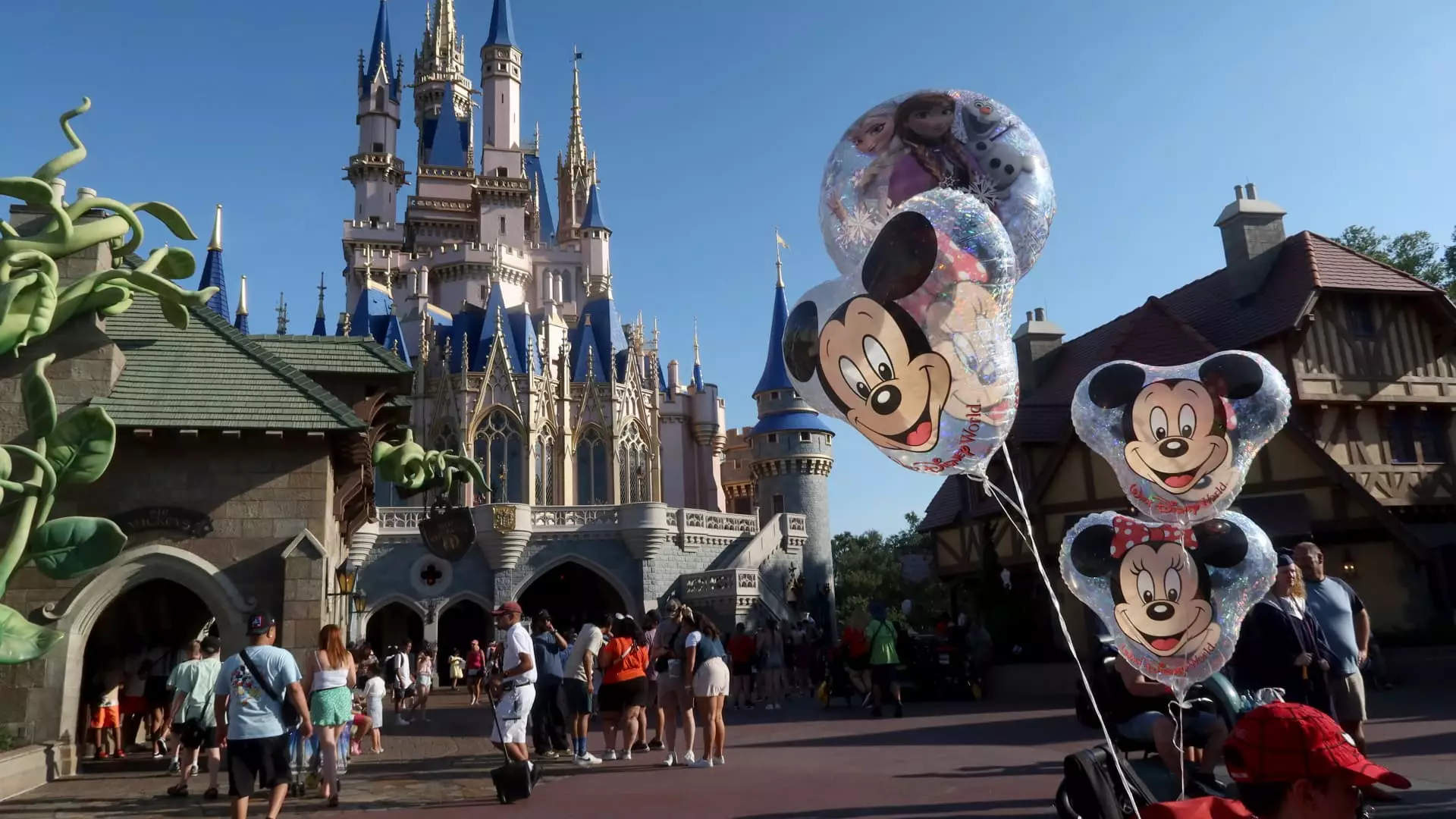As the financial world eagerly awaits Disney’s impending fiscal first-quarter earnings report, scheduled for Wednesday morning, the company’s performance in critical areas like streaming and theme parks has become a focal point for investors. Analysts, particularly those surveyed by LSEG, have set specific expectations for Disney, projecting earnings per share (EPS) at $1.45 and total revenue at approximately $24.62 billion. These figures serve as benchmarks against which Disney’s operational success will be assessed amidst increasing competitive pressure.
Disney has previously managed to appease stockholders by showcasing growth in its streaming service, coupled with a remarkable performance in its film sector and increased investment in theme park infrastructures. This triumvirate of strengths has allowed the company to recover from prior downturns. However, as we progress into 2025, concerns loom regarding the sustainability of this growth trajectory. The theme parks remain a substantial pillar of Disney’s business model, yet the entertainment giant must also navigate a rapidly evolving digital landscape as more competitors, such as Netflix, continue to joyously announce significant subscriber gains.
Another critical layer of scrutiny surrounds the forthcoming transition in leadership. CEO Bob Iger, who has masterminded much of Disney’s strategic maneuvers in recent years, is scheduled to step down by early 2026. The timing and selection of his successor have become pronounced talking points, raising questions about the future direction of the company. Investors will likely be attentive to any updates regarding this succession planning in Disney’s upcoming report.
The competition in the streaming sector is intense, with Netflix recently celebrating surpassing 300 million paid subscribers, cementing its position at the forefront. In contrast, Disney’s growth in subscriber numbers is hanging in the balance as consumers reassess their streaming commitments. In response to market challenges, Disney has opted for revenue-generating strategies, such as introducing ad-supported subscription tiers and tightening regulations surrounding password sharing. These strategies aim not only to boost immediate revenue but also to stabilize investor sentiment.
As Disney prepares to unveil its earnings results, the focus on streaming and its theme parks signifies a critical phase for the company. The interplay of leadership changes, fierce competition within the streaming arena, and the ongoing investment in its theme parks will heavily influence investor confidence and the company’s long-term view. While there are some positive signs, the upcoming report will likely provide a clearer picture of how well Disney can sustain its competitive edge in a complex and rapidly evolving market landscape. Investors and stakeholders are urged to remain vigilant for updates, as Disney stands at a crossroads that could define its future trajectory.

